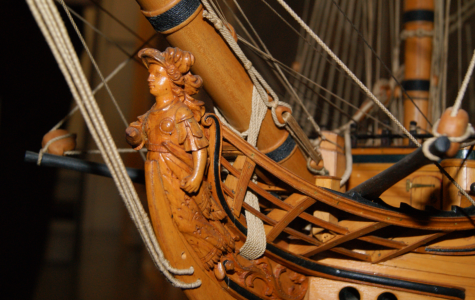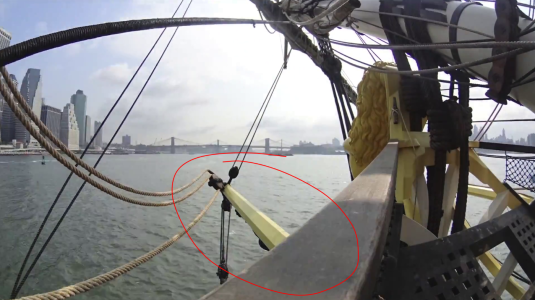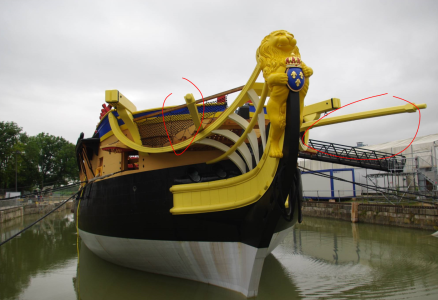Corsair and Allan are quite right.
This projecting timber is indeed called a bumkin, or boomkin, and was used to haul the weather tack taut. Before the boomkin, the fore tack was led through a hole in a timber fitted between the head rails of the ship, and before that it was led through a piece of timber on the underside of the knee of the head, with holes in it for this purpose; both port and starboard tacks leading through adjacent holes. Sometimes this timber was carved in the likeness of a serpent: see example below from a draught of the Sovereign of the Seas, dated to 1637. If it was plain, without carving, it was known as a 'comb'; presumably after the fleshy decoration on the head of a cockerel.
The pictures below show this sequence of develpment.
The final picture is a model in the NMM identified as the Hercules/Thunderer, but which I believe is the Hero (Hero was a woman, as is the figurehead; and there is no way that the figurehead makes one think of Hercules. The decoration on the ship is also similar to that of a draught of the Hero) Anyway, the boomkin is rigged, using a shoulder block; although the rigging is modern, and was added in the Museum in the 1980s, I believe it was (possibly by James Lees?)
Ratty
BELLONA, 74 GUNS, 1760. These boomkins are fitted into the beakhead bulkhead; they were also sometimes fitted into the knightheads.
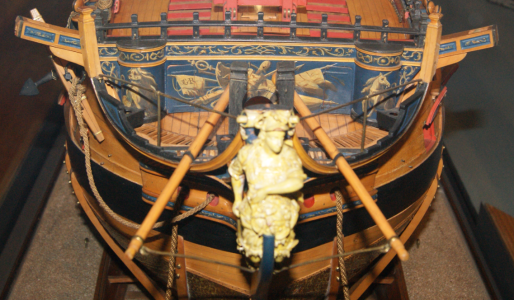
BOYNE, 1692. ONE FAIRLEAD ON EACH SIDE OF THE BOWS.
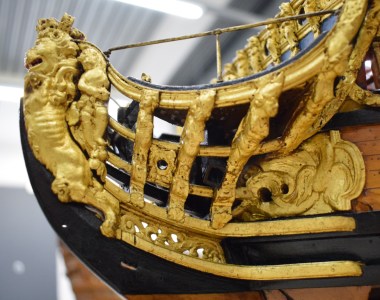
SOVEREIGN OF THE SEAS, 1637.
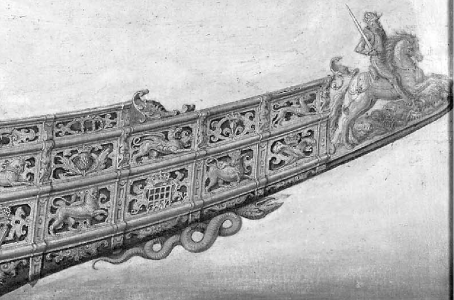
HERCULES/THUNDERER (HERO? CLASS VESSEL WITH BELLONA, I BELIEVE) RIGGED BOOMKINS IN BACKGROUND.
